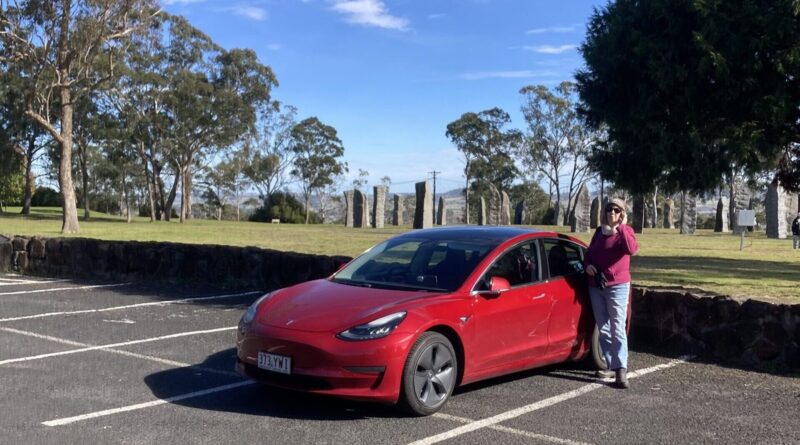Cold-Weather EV Driving to Waterfall Way
Support CleanTechnica's work through a Substack subscription or on Stripe.
We are getting past the idea of having serious adventures in Tess, our 6-year-old Tesla Model 3. In the early days, we travelled thousands of kilometers into the Outback and across states. We charged at caravan parks, using cords out of windows, and begged for power from friendly servo owners. These have all been written about on CleanTechnica. Getting older and wanting an easier life, our most recent trip was from Brisbane, west to the New England Highway, down to Armidale, and then along the beautiful Waterfall Way to the coast. An adventure — but much less stressful.
When we went on our earlier adventures, there was no high-speed charging once you left the coast. In fact, as you proceeded inland, people were amazed that you had made it that far. Most had never seen an electric vehicle “in the flesh” before. I still have vivid memories of the incredulous locals in Winton (1500 km from Brisbane) standing in front of my dirty Tesla proclaiming, “You can’t drive an EV out here!” And yet there we were.
Our next trip was along the coastal highway down to Victoria (over 1600 km). Most of this trip was covered by high-speed charging. Though, we did have to ask a servo owner to plug into his workshop — for those extra few kilometers of range. His sister owns a Tesla, so “no worries.” Remember, our Tesla Model 3 SR+ only had 320 km of range. We have a little less now due to some battery degradation. But times have changed.
This latest trip was covered by high-speed charging all the way. Not only that, but the chargers along the inland route all appear relatively new. Teslas were everywhere. We saw a lot of BYD Sharks as well. EVs are no longer the curiosity they once were. Nobody came to go “ooh” or “ahh!” We shared most charging centres with other travellers and had good conversations.
It is now Australia’s winter and the route we took drives along a high elevation. We even got to drive through a smattering of quickly melting snow. Cold weather driving is a new experience for us, living in subtropical Brisbane. We learnt how much power the car chews up heating the cabin and the seats. But unlike previous trips, it was not a problem. Every major town now has high-speed charging.
We left home with 300 km of range in the tank. There was a myriad of different EVs on the road out of Brisbane. Our first stop was Plainlands, where we availed ourselves of amenities and good coffee. We were joined at the charge point by a BYD Shark. I interrupted the Shark driver’s coffee for a chat. He told me that he prefers BYD to Tesla (OK) because he likes the BYD heads-up display, and the Shark ute syncs easily to his Apple CarPlay. He says that the national energy company he works for is going fully electric. Of the 16 members of his team, 14 drive electric cars.

The next leg of the trip took us through the scenic Maa Maa Creek, up and down hills and round and round bends. We must have crossed the same creek 10 times! It really reduced the range and we arrived for lunch at Stanthorpe with only 40 km left in the battery. No problems! As we relaxed in front of an open fire, the car charged rapidly just around the corner.

From there it was on to Glen Innes to see the standing stones and stay the night. Tess was the only EV in the tourist parking spot and must have caused some concern. While having a smackerel (like Winnie the Pooh) at the café, we overheard a group of fellow tourists loudly decrying electric cars and declaring they would never drive one. I had to restrain myself, I so much wanted to join them and shed a little light on their darkened minds. The FUD is strong with these ones! Glen Innes is also home to the “blade experience” and many wind farms.
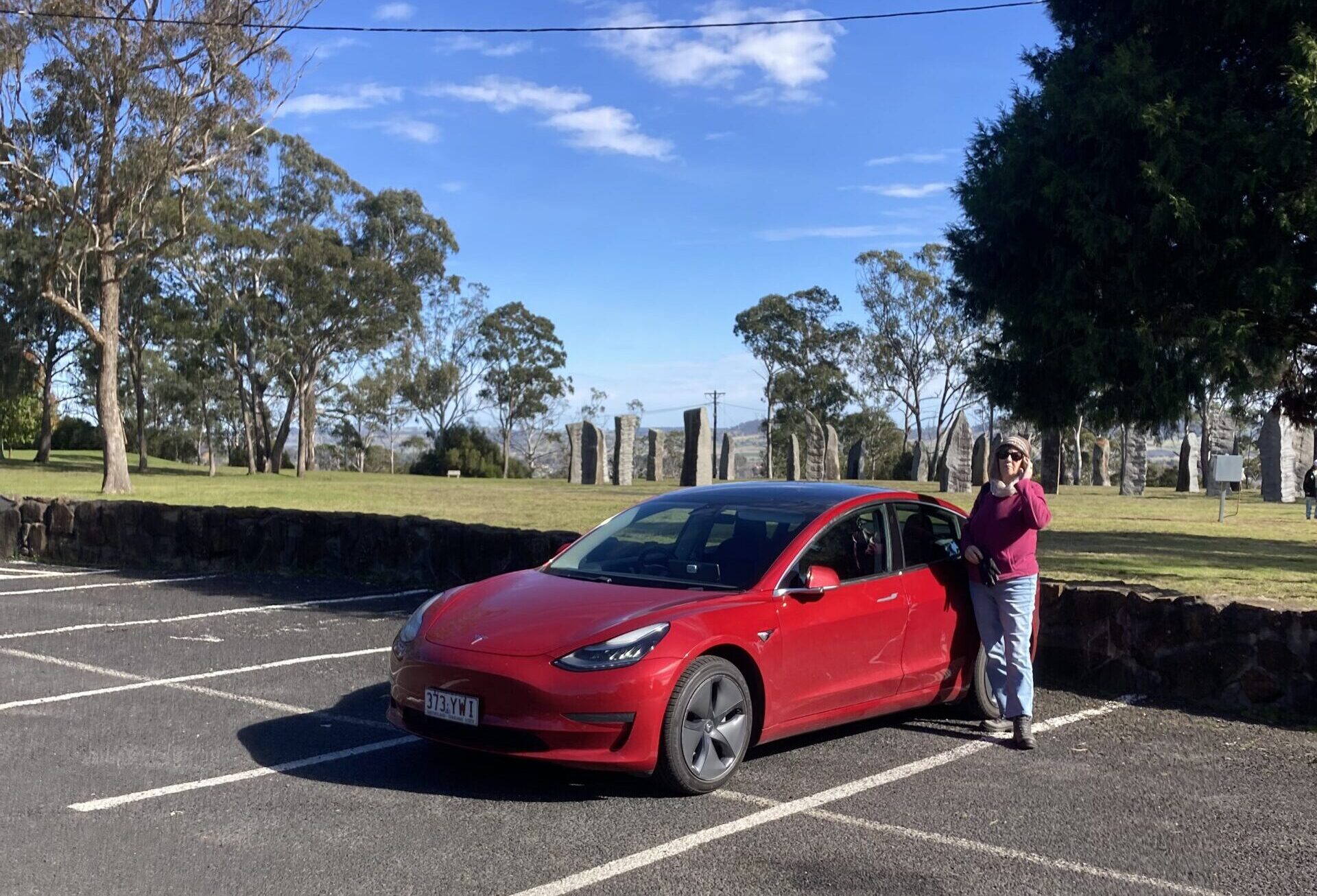

We arrived in Armidale and charged up at the new Tesla Superchargers accompanied by another Tesla owner. Of course, we swapped experiences. Not only were there four Superchargers available for use, but more were being built. Now we were really on Waterfall Way. That afternoon we visited Dangars Falls — avoiding the spiders and the snakes warming up in the weak winter sunshine. I hadn’t been there since 1982 when I was training as a primary teacher at the University of New England.
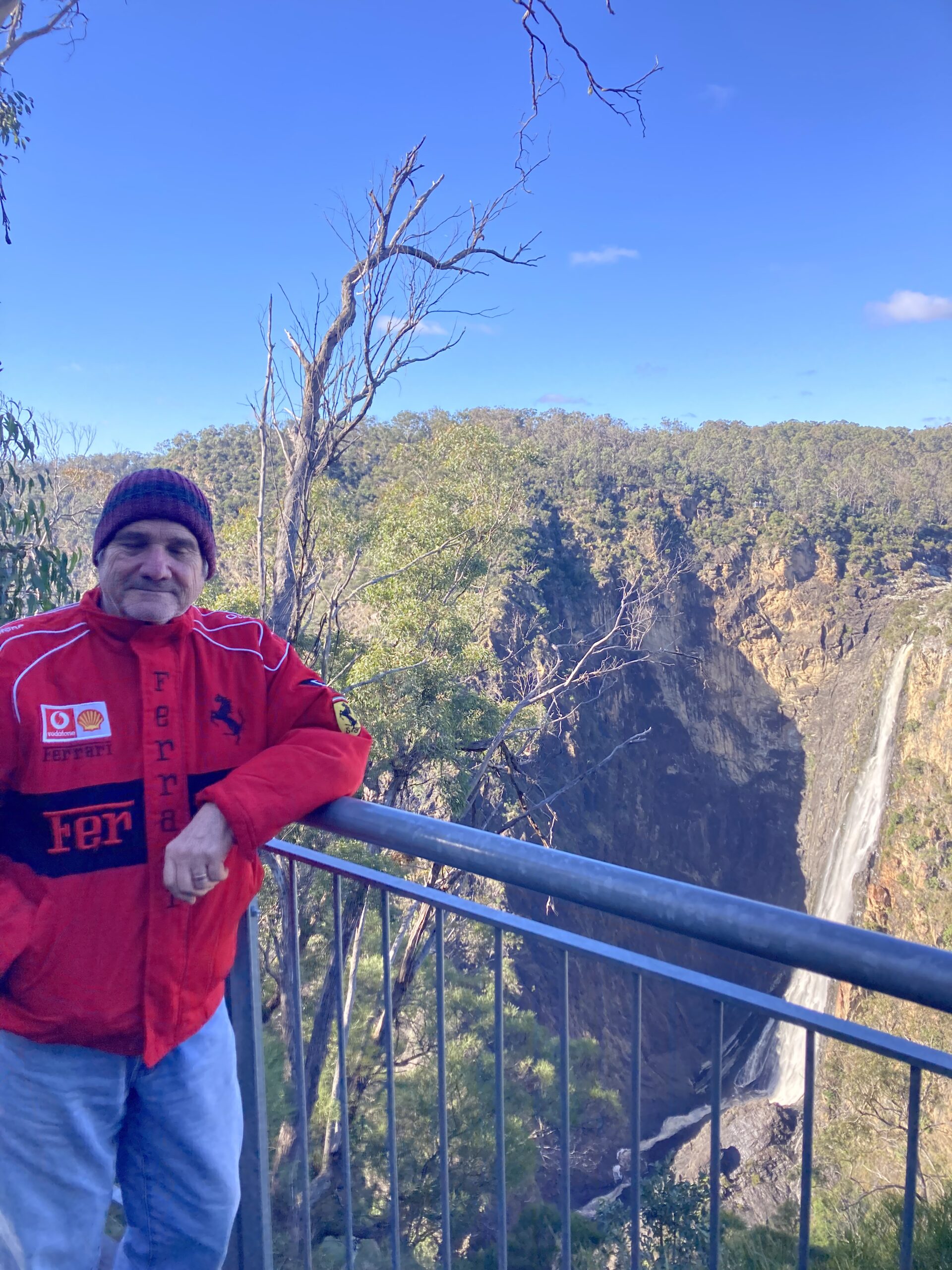

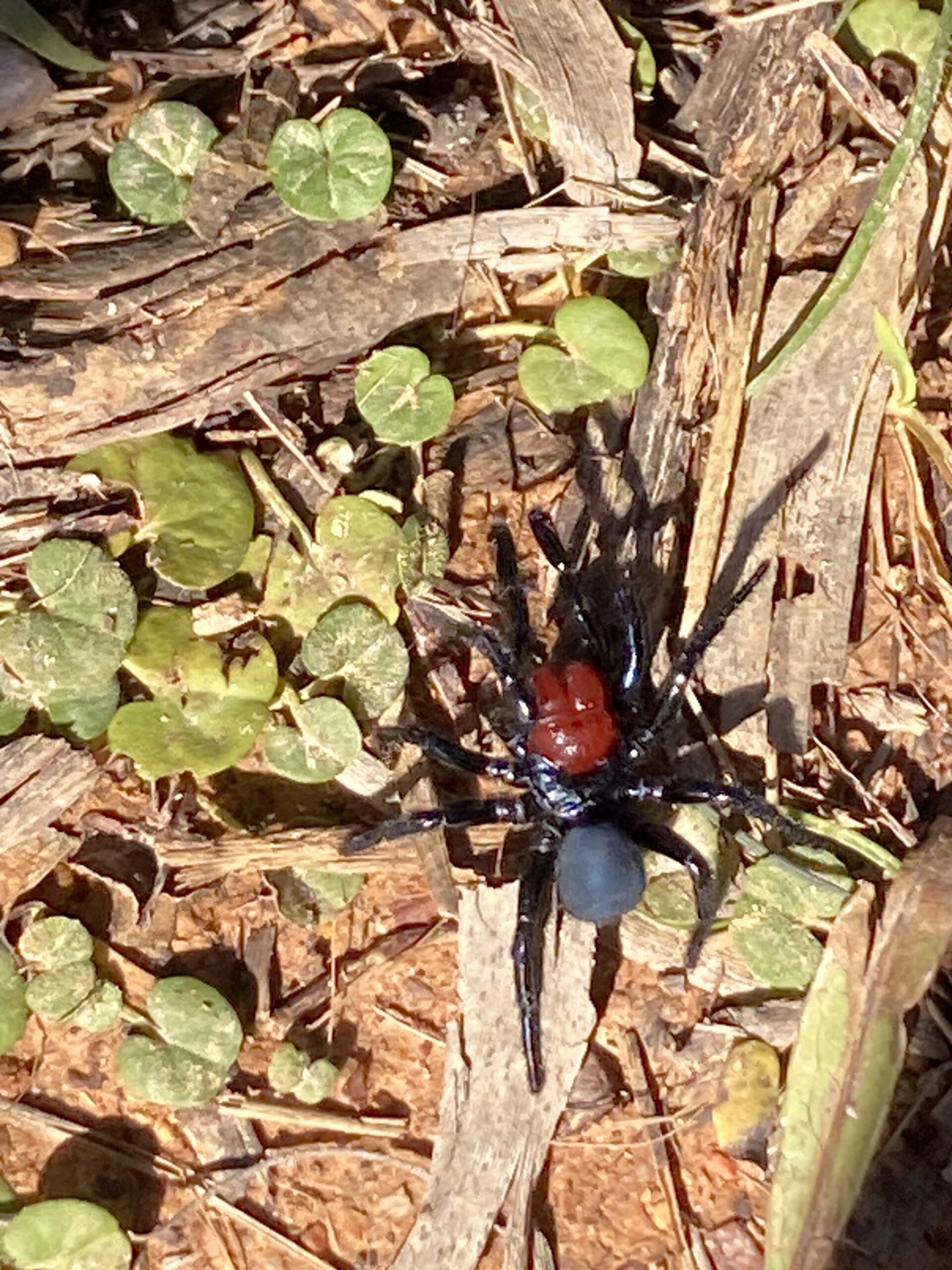
It was snowing when we left Armidale and travelled to the next two waterfalls — Ebor and Wollomombi.
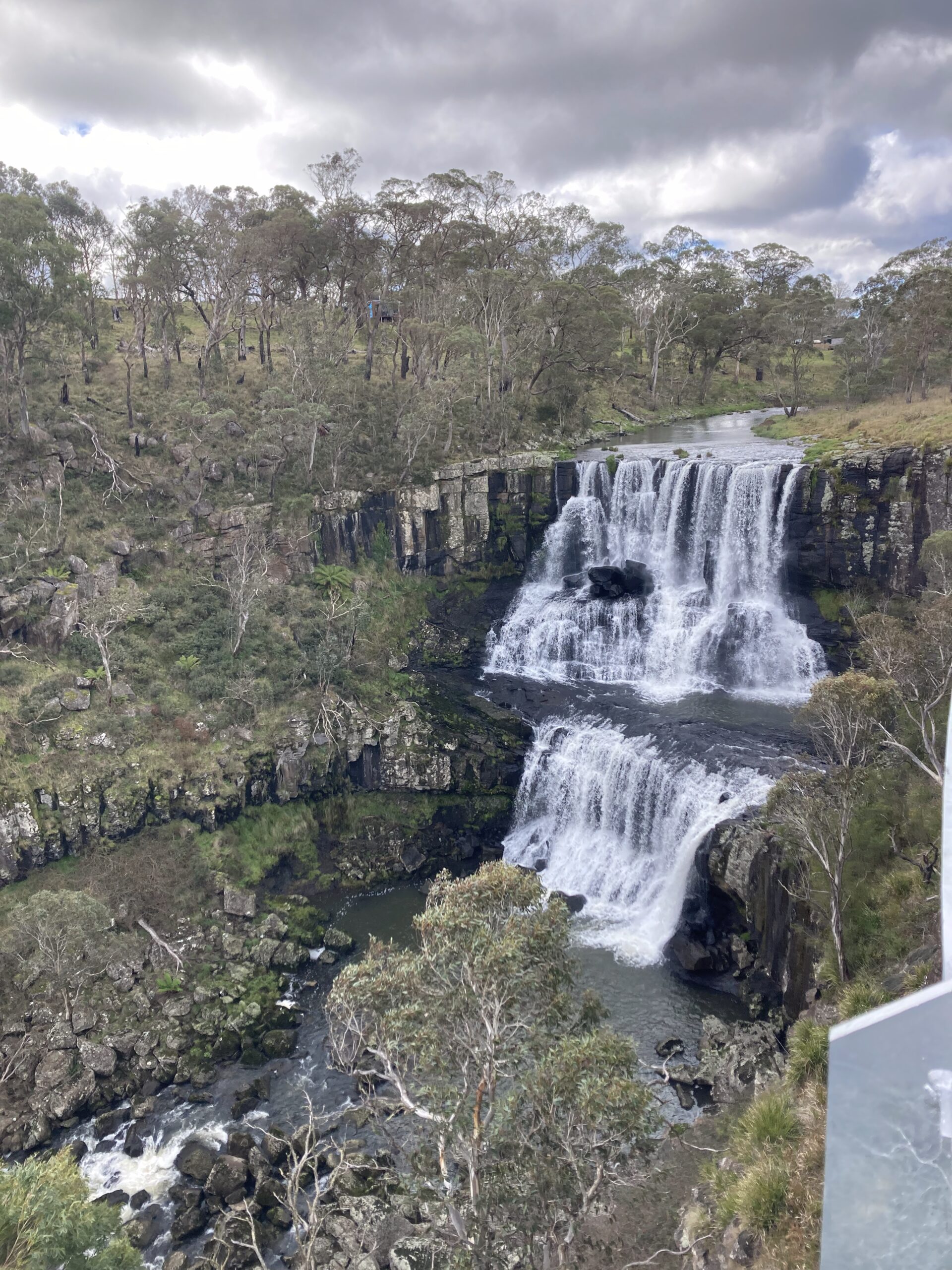
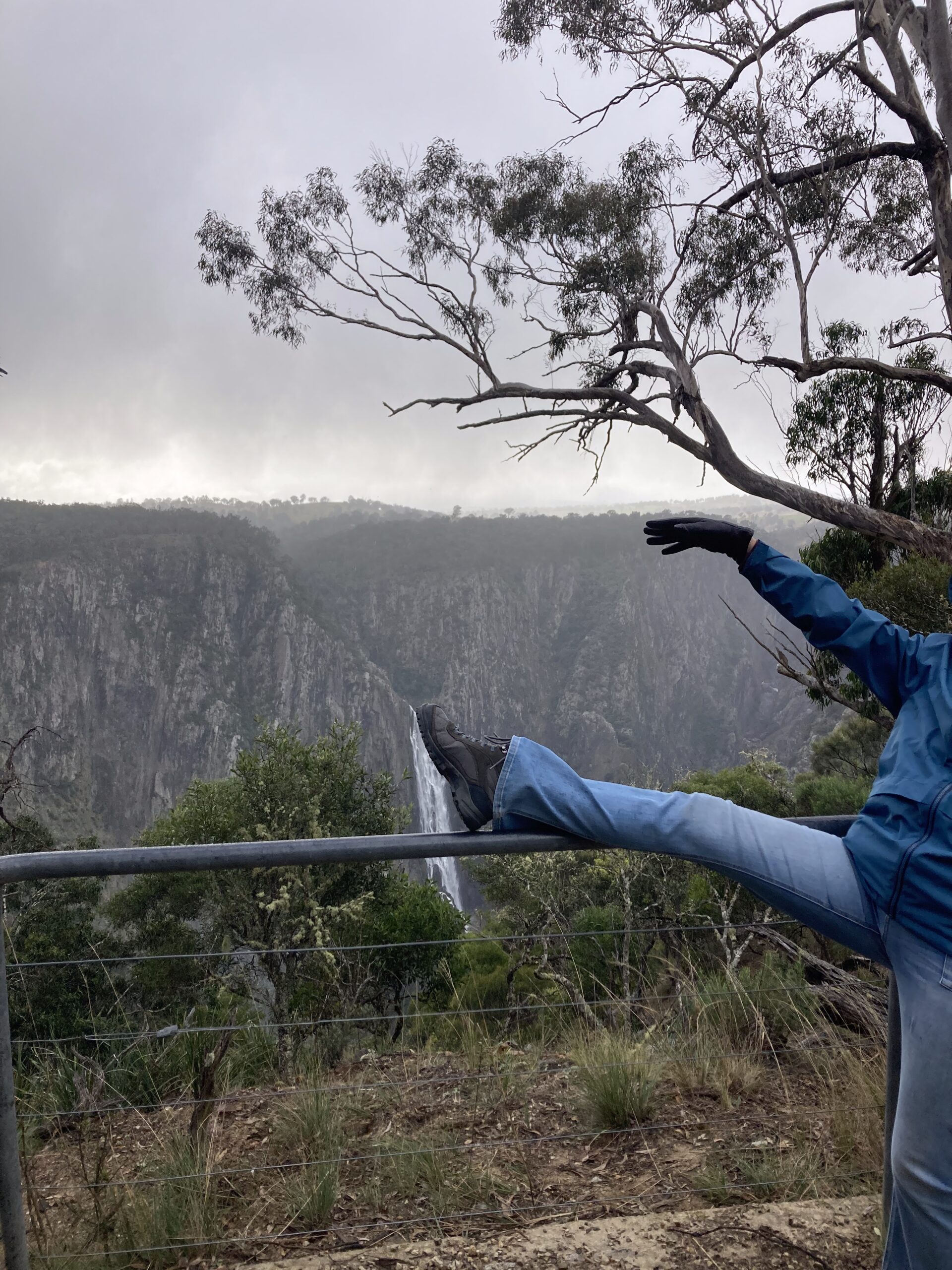
Our next charge point was Dorrigo, where we discovered that Elon’s antics had not escaped the attention of local vandals.

In the carpark at the Dorrigo National Park, Tess was joined by a Kia EV6. I hope they had a good chat while Majella and I enjoyed the view from the Skywalk and walked 10,000 steps to Crystal Falls and back. The phone also said that we had climbed 28 flights of stairs — sure felt like it.

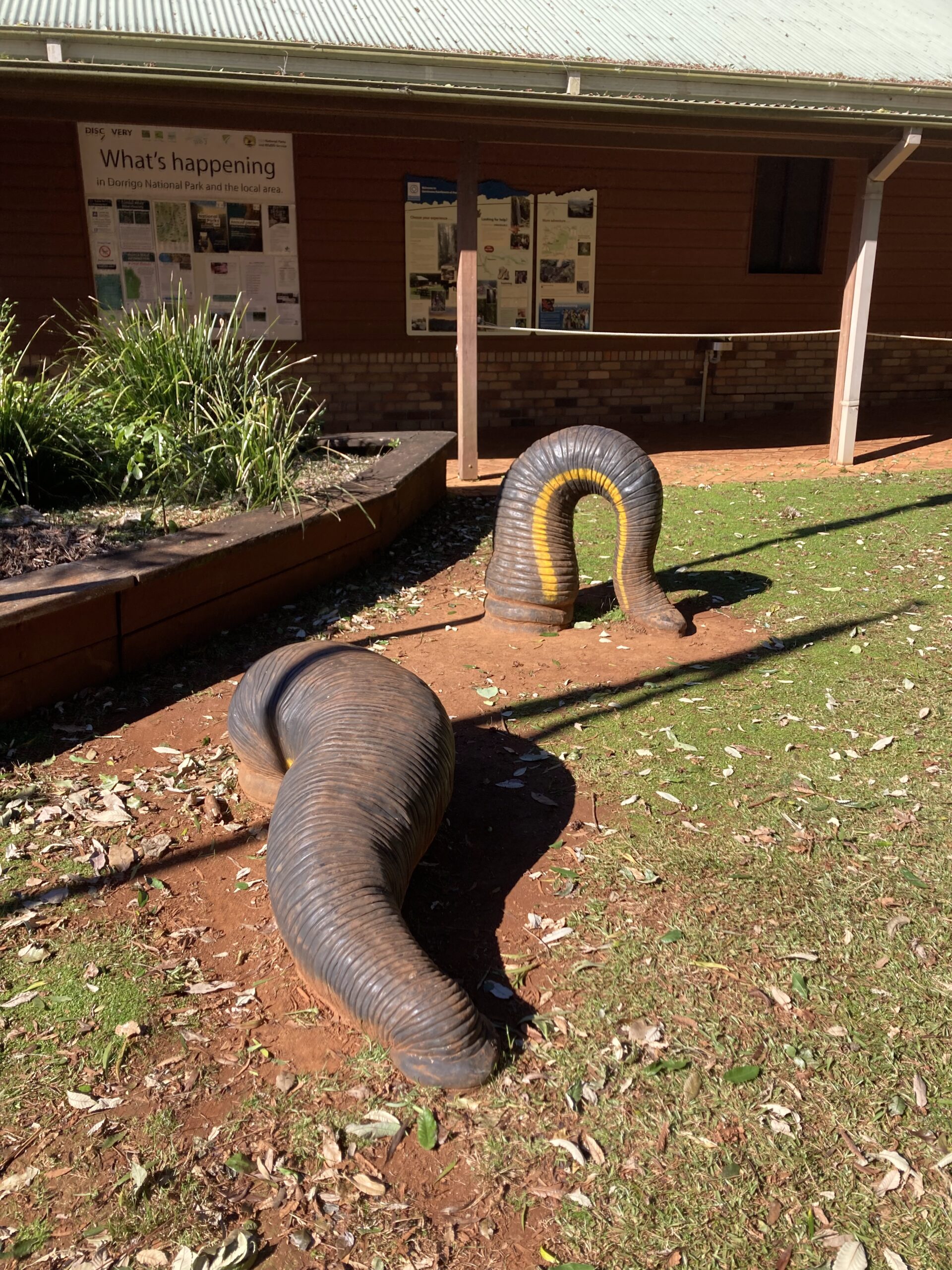
Then it was down to the coast, charging at the Big Banana, Harwood (with another Tesla) and Knockrow (with another Shark and a Tesla). With electricity prices at around a third the cost of petrol, the EV was cost effective on a long trip. All up we drove over 1100 km for an overall cost of about AU$126.
And the lessons learnt? You don’t need a diesel fourby to visit national parks and play tourist. An EV and a stout pair of legs will do it. Get out there — YOLO! Stop frequently and enjoy the local sites, sights, and delicacies. There have been massive improvements in charging infrastructure in last few years, with more to come. Be aware how much extra power you need when driving in the cold and leaving Sentry Mode on all night.
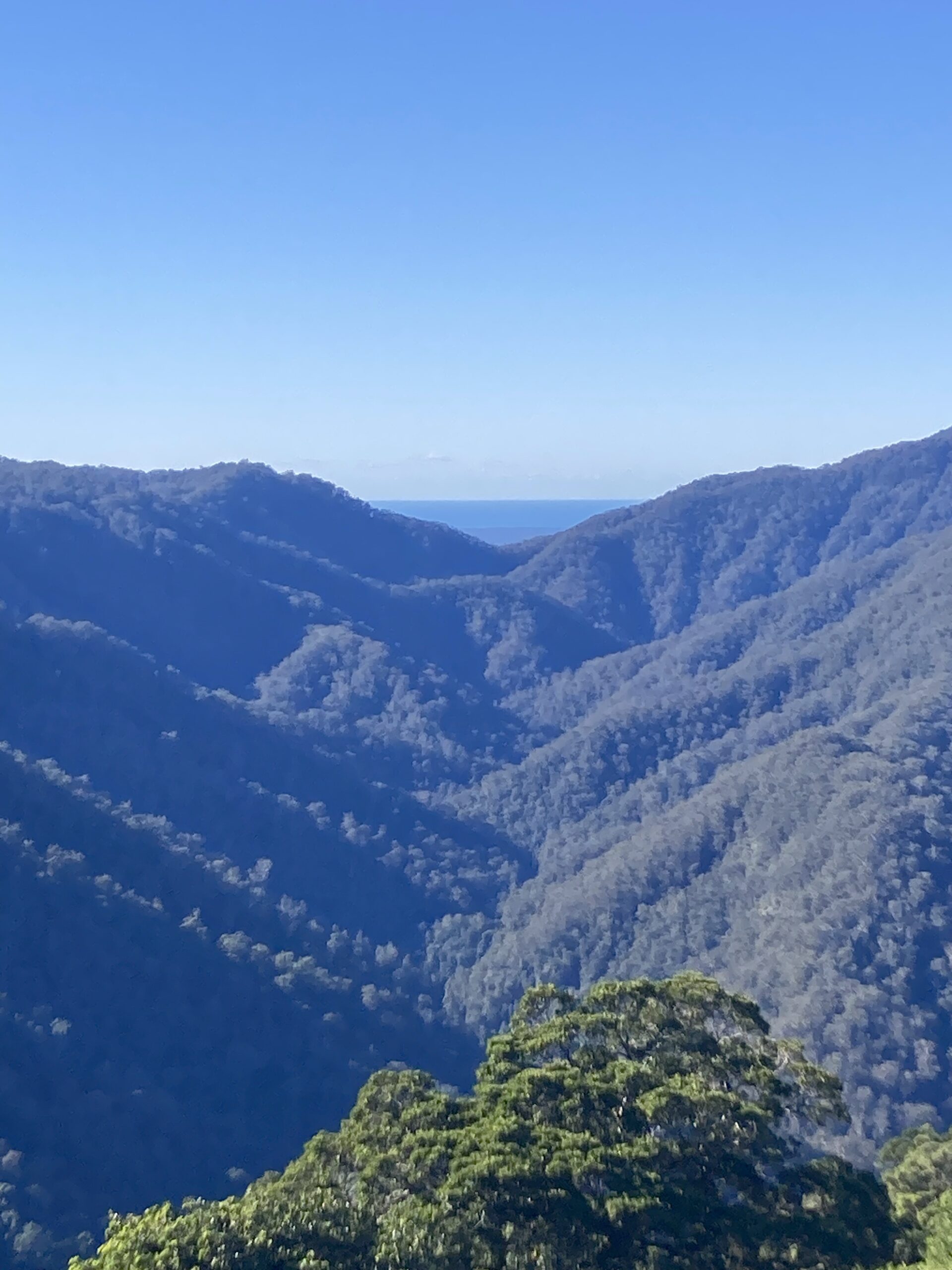
New South Wales is planning to install chargers at all of its tourist spots in the future. The future for tourism in Australia is bright, green, and electric!
Sign up for CleanTechnica's Weekly Substack for Zach and Scott's in-depth analyses and high level summaries, sign up for our daily newsletter, and follow us on Google News!
Have a tip for CleanTechnica? Want to advertise? Want to suggest a guest for our CleanTech Talk podcast? Contact us here.
Sign up for our daily newsletter for 15 new cleantech stories a day. Or sign up for our weekly one on top stories of the week if daily is too frequent.
CleanTechnica uses affiliate links. See our policy here.
CleanTechnica's Comment Policy

